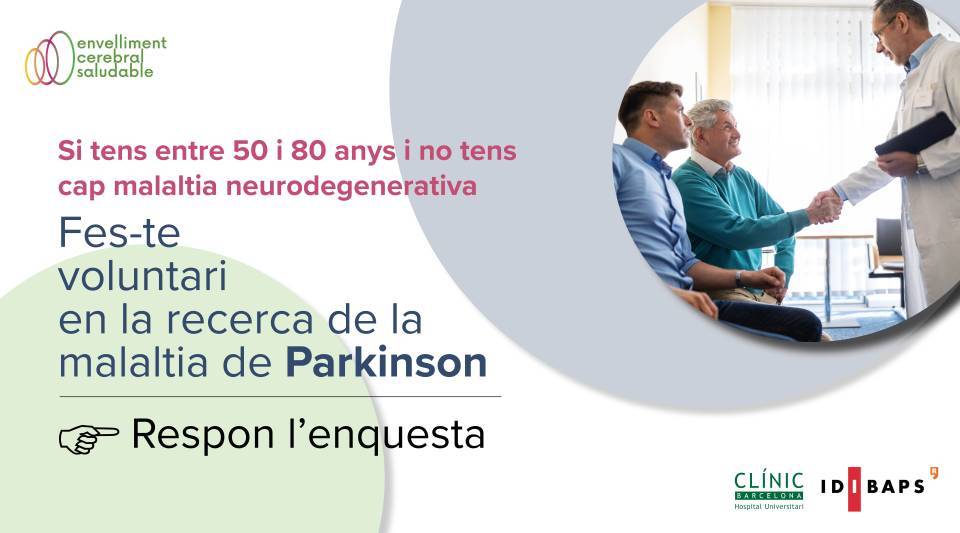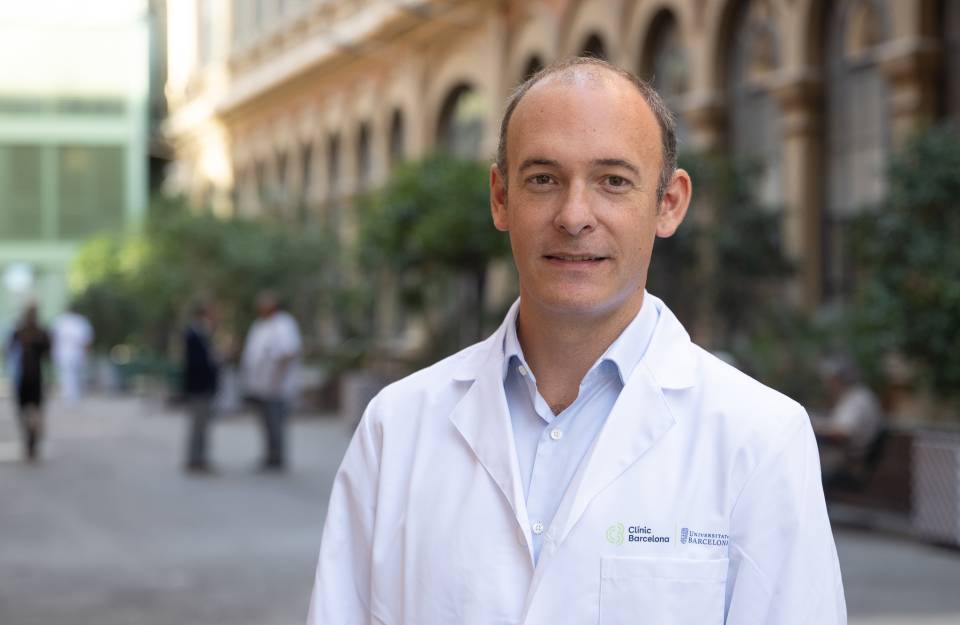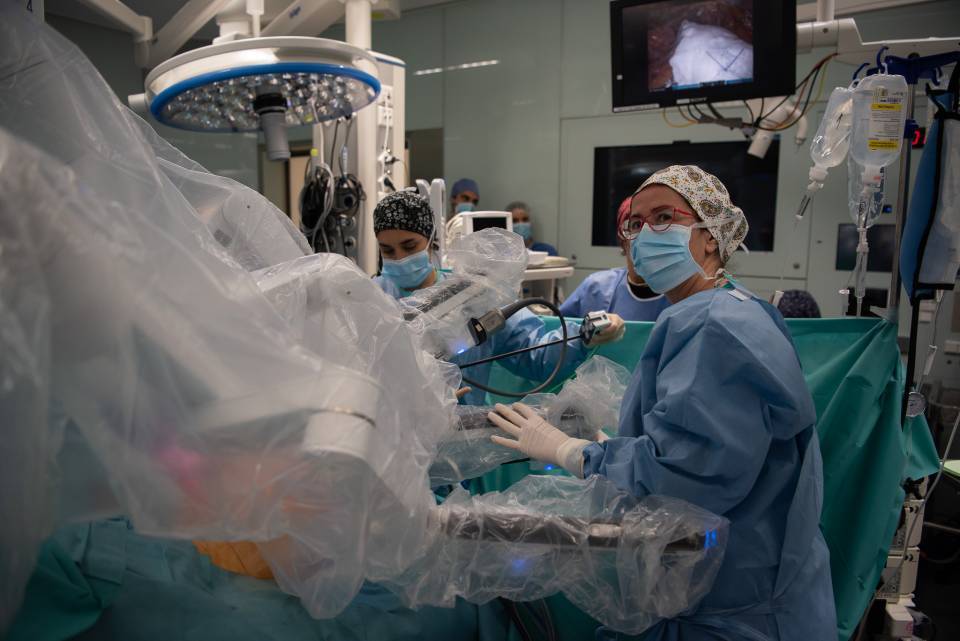The HeBA study is led by the Hospital Clínic de Barcelona-IDIBAPS, along with the Universities of Luxembourg, Kassel and Innsbruck. The principal researchers are Dr. M. Jose Martí and Dr. Eduard Tolosa from the Parkinson’s Disease and Movement Disorders Unit at the Hospital Clínic de Barcelona and of the Parkinson’s Disease and other Neurodegenerative Movement Disorders: clinical and experimental research IDIBAPS research group. Dra. Alícia Garrido, a neurologist, is also part of the research team.
The study aims to obtain information on 10,000 people aged between 50 and 80 who do not have any neurological problems. People who have family members diagnosed with a neurodegenerative disease can also participate.
You can answer the survey
The aim of the “Healthy Brain Aging” (HeBA) study is to identify as early as possible people with a higher risk of developing this disease. In order to obtain this information, an online form has been designed with questions about factors that are believed to be associated with a greater risk of developing Parkinson's disease or other neurodegenerative diseases. The study aims to examine scientifically the suitability of these questionnaires as early detection tools. In a second phase of the study, some of the participants will be invited to go to the hospital for a more detailed examination.
The most important goal in Parkinson’s disease research is to find a treatment that cures or helps slow down its progression. At present, it is diagnosed when irreversible brain damage has already occurred. The degeneration and loss of brain neurons starts many years before the disease, with tremor and slowness of movement, becomes patent. The risk factors (genetic, environmental, lifestyle) that cause it to develop are poorly known, but it is known that people with loss of smell or a close relative diagnosed with Parkinson’s disease are more likely to suffer from it. Identifying these risk factors will allow it to be diagnosed before irreversible brain damage occurs. Whilst most people will never get Parkinson’s disease, participation in the HeBA study can help us find out who does and who does not develop it and why.
One of the reasons why these is no cure for most of these diseases is that, when people are diagnosed, most of their nerve cells have already been irreversibly lost. With Parkinson’s disease, for example, by the time the diagnosis has been made, most people have lost 50-70% of their dopamine-producing cells. Cell death begins many years before the first symptoms appear.
Research carried out to date suggests that problems with anxiety, depression, memory loss, personality changes, sleep disorders, constipation and loss of smell can appear up to 20 years before the symptoms that lead to a diagnosis of the disease. However, it is likely that many people, as they get older, will present some of these symptoms without later suffering from a neurodegenerative disease. The aim of the study is to identify those people who have one or more of these symptoms and are at particularly high risk of developing one of these diseases.
Parkinson’s disease is the most common neurodegenerative disease after Alzheimer’s disease. It is characterised by slowness of movement, rigidity, tremor and gait disturbance. At present, there is no treatment available to cure or modify the disease. However, there are many drugs, and even surgical treatment, to relieve the symptoms.
The onset and progression of the disease are gradual. It is currently considered to be a multisystem disorder with many non-motor symptoms, in addition to motor symptoms. An incidence (new cases per year) of between 8 and 19 cases per 100,000 people per year has been reported in the general population. It is rare in people under the age of 40 and increases with age. At 65 years of age, it would be approximately 50 per 100,000, and at 85 it would be about 400 per 100,000.




